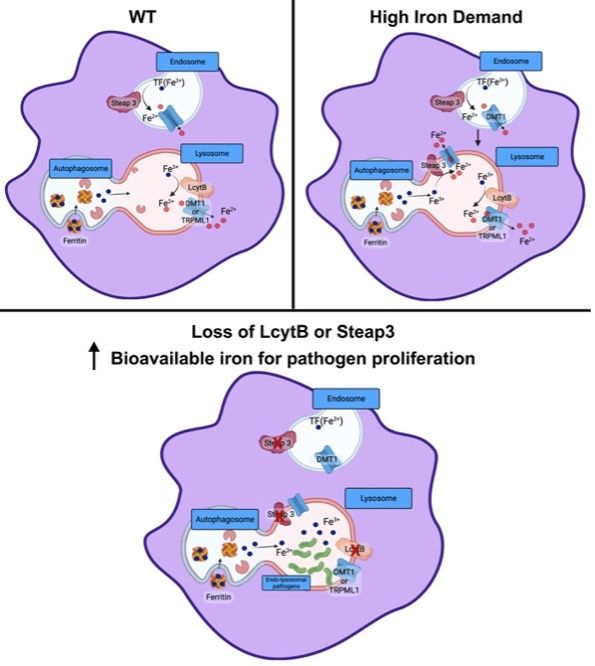
Iron that is stored in macrophages as ferritin can be made bioavailable by degrading ferritin in the lysosome and releasing iron back into the cytosol. Iron stored in ferritin is found as Fe3+ and must be reduced to Fe2+ before it can be exported from the lysosome. Here we report that the lysosomal reductase Cyb561a3 (LcytB) and the endosomal reductase six-transmembrane epithelial antigen of prostate 3 (Steap3) act as lysosomal ferrireductases in the mouse macrophage cell line RAW264.7 converting Fe3+ to Fe2+ for iron recycling. We determined that when lysosomes were loaded with horse cationic ferritin, reductions or loss of LcytB or Steap3 using CRISPR/Cas9-mediated knockout technology resulted in decreased lysosomal iron export. Loss of both reductases was additive in decreasing lysosomal iron export. Decreased reductase activity resulted in increased transcripts for iron acquisition proteins DMT1 and transferrin receptor 1 (Tfrc1) suggesting that cells were iron limited. We show that transcript expression of LcytB and Steap3 is decreased in macrophages exposed to Escherichia coli pathogen UTI89, which supports a role for these reductases in regulating iron availability for pathogens. We further show that loss of LcytB and Steap3 in macrophages infected with UTI89 led to increased proliferation of intracellular UTI89 suggesting that the endolysosomal system is retaining Fe3+ that can be used for proliferation of intravesicular pathogens. Together, our findings reveal an important role for both LcytB and Steap3 in macrophage iron recycling and suggest that limiting iron recycling by decreasing expression of endolysosomal reductases is an innate immune response to protect against pathogen proliferation and sepsis.
